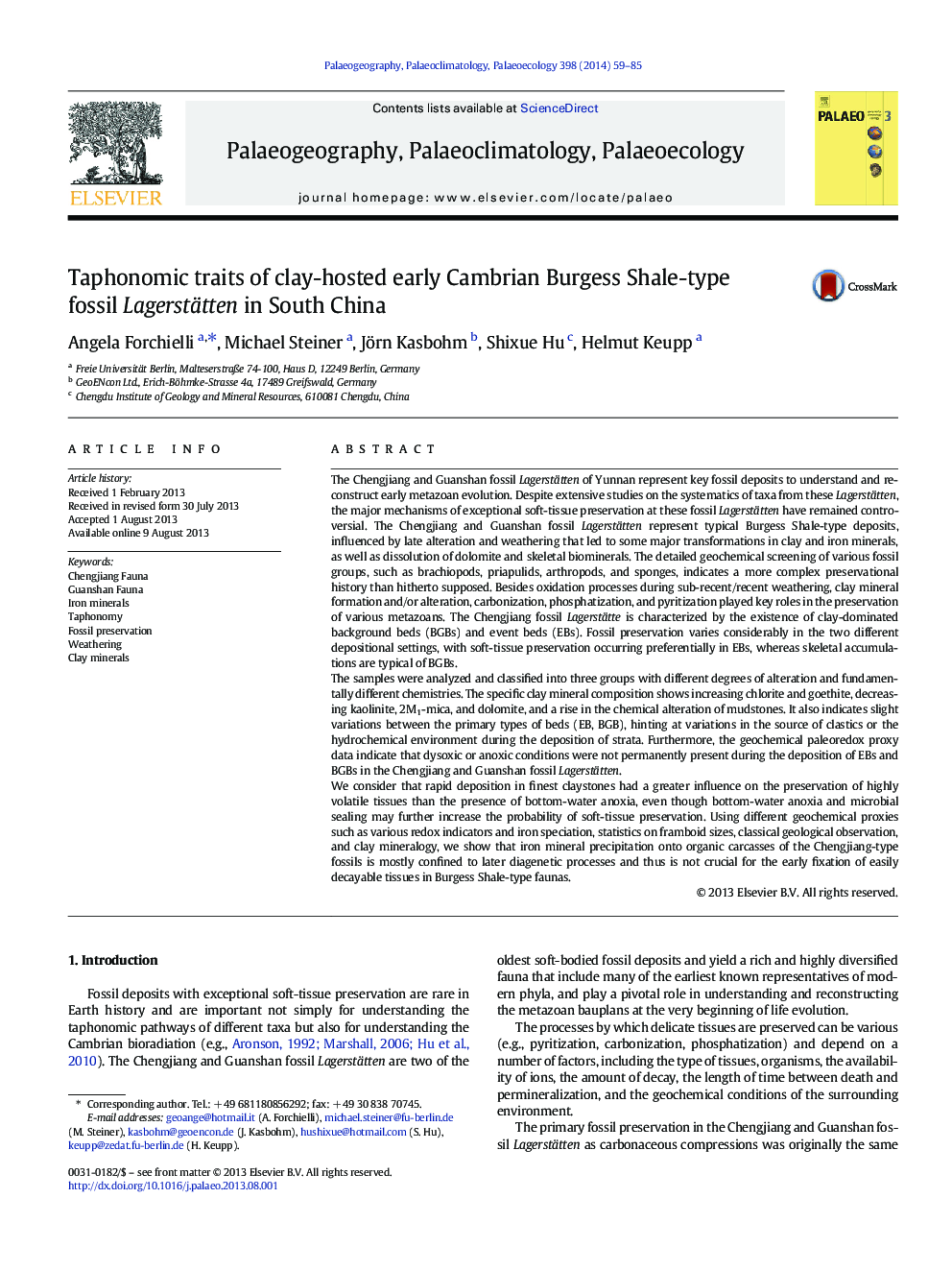| کد مقاله | کد نشریه | سال انتشار | مقاله انگلیسی | نسخه تمام متن |
|---|---|---|---|---|
| 4466369 | 1622192 | 2014 | 27 صفحه PDF | دانلود رایگان |

• The samples are classified into three groups of different degrees of alteration.
• The chemistry of these groups is fundamentally different.
• Bottom-water anoxia conditions were not permanently present during the deposition.
• A new taphonomical model for the preservation of Chengjiang Biota is developed.
The Chengjiang and Guanshan fossil Lagerstätten of Yunnan represent key fossil deposits to understand and reconstruct early metazoan evolution. Despite extensive studies on the systematics of taxa from these Lagerstätten, the major mechanisms of exceptional soft-tissue preservation at these fossil Lagerstätten have remained controversial. The Chengjiang and Guanshan fossil Lagerstätten represent typical Burgess Shale-type deposits, influenced by late alteration and weathering that led to some major transformations in clay and iron minerals, as well as dissolution of dolomite and skeletal biominerals. The detailed geochemical screening of various fossil groups, such as brachiopods, priapulids, arthropods, and sponges, indicates a more complex preservational history than hitherto supposed. Besides oxidation processes during sub-recent/recent weathering, clay mineral formation and/or alteration, carbonization, phosphatization, and pyritization played key roles in the preservation of various metazoans. The Chengjiang fossil Lagerstätte is characterized by the existence of clay-dominated background beds (BGBs) and event beds (EBs). Fossil preservation varies considerably in the two different depositional settings, with soft-tissue preservation occurring preferentially in EBs, whereas skeletal accumulations are typical of BGBs.The samples were analyzed and classified into three groups with different degrees of alteration and fundamentally different chemistries. The specific clay mineral composition shows increasing chlorite and goethite, decreasing kaolinite, 2M1-mica, and dolomite, and a rise in the chemical alteration of mudstones. It also indicates slight variations between the primary types of beds (EB, BGB), hinting at variations in the source of clastics or the hydrochemical environment during the deposition of strata. Furthermore, the geochemical paleoredox proxy data indicate that dysoxic or anoxic conditions were not permanently present during the deposition of EBs and BGBs in the Chengjiang and Guanshan fossil Lagerstätten.We consider that rapid deposition in finest claystones had a greater influence on the preservation of highly volatile tissues than the presence of bottom-water anoxia, even though bottom-water anoxia and microbial sealing may further increase the probability of soft-tissue preservation. Using different geochemical proxies such as various redox indicators and iron speciation, statistics on framboid sizes, classical geological observation, and clay mineralogy, we show that iron mineral precipitation onto organic carcasses of the Chengjiang-type fossils is mostly confined to later diagenetic processes and thus is not crucial for the early fixation of easily decayable tissues in Burgess Shale-type faunas.
Journal: Palaeogeography, Palaeoclimatology, Palaeoecology - Volume 398, 15 March 2014, Pages 59–85